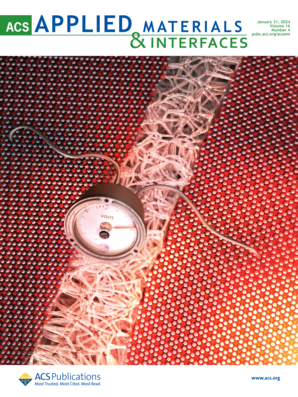高精度表面张力测量钠,钾,和他们的合金通过杜noy环张力测量
IF 8.3
2区 材料科学
Q1 MATERIALS SCIENCE, MULTIDISCIPLINARY
引用次数: 0
摘要
后锂离子电池的发展引起了人们对碱金属阳极的极大兴趣,特别是钠(Na)、钾(K)和钠钾(Na - K)合金。Na-K合金由于其独特的低熔点,在部分液态阳极中具有很大的应用前景。影响na基阳极性能的一个关键因素是润湿行为,它决定着电导率、机械接触和长期稳定性。润湿的核心是表面张力,这是固液气相互作用的基本性质。然而,由于实验和理论的挑战,碱金属及其合金,特别是Na-K体系的表面张力仍然知之甚少。本研究首次在碱金属体系中采用Du no本文章由计算机程序翻译,如有差异,请以英文原文为准。

High-Precision Surface Tension Measurements of Sodium, Potassium, and Their Alloys via Du Noüy Ring Tensiometry
The development of post-lithium-ion batteries has sparked significant interest in alkali-metal anodes, particularly sodium (Na), potassium (K), and sodium–potassium (Na–K) alloys. Na–K alloys are promising for partially liquid anodes due to their unique low melting points. A critical factor influencing Na–K-based anode performance is wetting behavior, which governs electrical conductivity, mechanical contact, and long-term stability. At the heart of wetting lies surface tension, a fundamental property of solid–liquid–gas interactions. However, the surface tension of alkali metals and their alloys, particularly Na–K systems, remains poorly understood due to experimental and theoretical challenges. This study bridged these gaps by employing Du Noüy ring tensiometry for the first time in alkali-metal systems to measure the surface tension of Na, K, and Na–K alloys across temperatures from ambient to 180 °C. A key innovation in this work is the development of the push-in Du Noüy method, which provided significantly higher precision and reliability compared to the traditional pull-out technique, without requiring a correction factor. The measured surface tension decreased with increasing temperature for the studied Na–K alloys. For instance, for a eutectic Na–K mixture, the surface tension decreases from 121.7 mN m–1 to 112.2 mN m–1 when increasing the temperature from ambient to 180 °C. Additionally, this study presented the first use of Gibbs free energy minimization to model the surface tension of the Na–K system. The robust method significantly enhanced the predictive accuracy compared to the previous simplified model, reducing deviations from 25% to 2%. Our findings reveal that surface tension increases with sodium mole fraction in the bulk phase, yet the surface monolayer remains potassium-rich, indicating non-ideal surface behavior. This study deepens the understanding of alkali-metal wetting behavior, providing valuable insights for designing optimized interfaces in next-generation semi-solid alkali-metal batteries.
求助全文
通过发布文献求助,成功后即可免费获取论文全文。
去求助
来源期刊

ACS Applied Materials & Interfaces
工程技术-材料科学:综合
CiteScore
16.00
自引率
6.30%
发文量
4978
审稿时长
1.8 months
期刊介绍:
ACS Applied Materials & Interfaces is a leading interdisciplinary journal that brings together chemists, engineers, physicists, and biologists to explore the development and utilization of newly-discovered materials and interfacial processes for specific applications. Our journal has experienced remarkable growth since its establishment in 2009, both in terms of the number of articles published and the impact of the research showcased. We are proud to foster a truly global community, with the majority of published articles originating from outside the United States, reflecting the rapid growth of applied research worldwide.
 求助内容:
求助内容: 应助结果提醒方式:
应助结果提醒方式:


